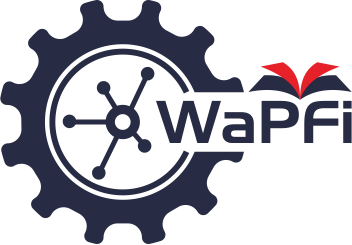Unveiling the evolution: A bibliometric analysis of physics learning website trends in the past 5 years
Abstract
This study aimed to comprehensively examine the field of physics learning website research by conducting bibliometric analysis on 101 publications from the 2018-2023 Scopus database. The purpose of this research was to comprehensively assess the field of physics learning website research. This article performed bibliometric analysis on literature related to physics learning websites, focusing on four main research questions: (1) How did research on physics learning websites develop? (2) Who are the countries, agencies and authors that have contributed most to research on physics learning websites? (3) What were the research topics on physics learning websites that researchers had explored in the last 5 years? (4) How was the distribution and trend of keywords in research on physics learning websites? This study combined quantitative analysis with descriptive methods. The focus was on physics learning websites found within Scopus, determined based on article titles, abstracts, and keywords. During this study, the R-tool bibliometrix package (biblioshiny) was used for data analysis and mapping. The results show that the number of publications experiences fluctuations (irregular ups and downs). Findings indicate that Indonesia, the United States, and Canada are the most prolific affiliated countries for researchers on physics learning websites, with the highest language being English. Stanford University, Universitas Negeri Jakarta, and the University of West Bohemia are the most influential universities in the field of physics learning websites. V. Serevina, Myu Khlopov, and FC. Wibowo are the most relevant researchers in the field of physics learning websites. The most common types of research documents are conference papers and articles, with the highest fields being physics and astronomy, computer science, and engineering. The most represented articles on physics learning websites are from the Journal of Physics: Conference Series, Bled Workshops in Physics, and CEUR Workshop Proceedings. Additionally, the top Plus Keywords are websites, with a frequency of 41 or 3.54% of the total, and the top author keywords are astroparticle physics, e-learning, and machine learning, with a frequency of 4 or 1.27% of the total.
Downloads
References
Alfany, S. F., Arrizkiyah, A., Suprapto, N. & Deta, U. A. (2022). Research Trend and Productivity of the Qur’anic Physics Research Based on Scopus Database (1992-2020). Kasuari: Physics Education Journal (KPEJ), 5(1), 19–32. https://doi.org/10.37891/kpej.v5i1.211
Ardiansyahroni, Tjalla, A. & Mahdiyah. (2023). Data Kategorik dalam Penelitian: Review Bibliometrik. Jurnal Ilmiah Mandala Education, 9(1), 796–802. https://doi.org/10.58258/jime.v9i1.4814
Deng, S. & Xia, S. (2020). Mapping the interdisciplinarity in information behavior research: a quantitative study using diversity measure and co occurrence analysis. Scientometrics, 124, 489–513. https://doi.org/10.1007/s11192-020-03465-x
Dewi, I. S. & Jauhariyah, M. N. R. (2021). Analisis Bibliometrik Implementasi Pembelajaran Fisika Berbasis STEM pada Tahun 2011-2021. Jurnal Ilmiah Pendidikan Fisika, 5(3), 368–387. https://doi.org/10.20527/jipf.v5i3.3904
Gao, Y., Wong, S. L., Khambari, M. N. Md. & Noordin, N. (2022). A Bibliometric Analysis of the Scientific Production of e-Learning in Higher Education (1998-2020). International Journal of Information and Education Technology, 12(5), 390–399. https://doi.org/10.18178/ijiet.2022.12.5.1632
Indriyanti, F., Fauziah, T. N. & Nuryadin, A. (2023). Analisis Bibliometrik Penggunaan Video Pembelajaran di Sekolah Dasar Tahun 2013-2022 Menggunakan Aplikasi VOSViewer. Jurnal Educatio FKIP UNMA, 9(1), 23–31. https://doi.org/10.31949/educatio.v9i1.3906
Jia, Y., Chen, Y., Yan, P. & Huang, Q. (2021). Bibliometric Analysis on Global Research Trends of Airborne Microorganisms in Recent Ten Years (2011-2020). Aerosol and Air Quality Research, 21(2), 1–12. https://doi.org/10.4209/aaqr.2020.07.0497
Karakose, T., Tülübaş, T. & Papadakis, S. (2022). Revealing the Intellectual Structure and Evolution of Digital Addiction Research: An Integrated Bibliometric and Science Mapping Approach. International Journal of Environmental Research and Public Health, 19(22), 1–27. https://doi.org/10.3390/ijerph192214883
Le, H. T. T., Dao, Q. T. M., Pham, V.-C. & Tran, D. T. (2019). Global trend of open innovation research: A bibliometric analysis. Cogent Business & Management, 6(1), 1–20. https://doi.org/10.1080/23311975.2019.1633808
Lestari, D. R., Josephine, W. & Nuryadin, A. (2023). Analisis Bibliometrik Perkembangan Pembelajaran Online dengan Aplikasi Zoom Menggunakan VOSViewer. Jurnal Ilmu Pendidikan STKIP Kusuma Negara, 14(2), 194–204. https://doi.org/10.37640/jip.v14i2.1586
Lin, T.-C., Tang, K.-Y., Lin, S.-S., Changlai, M.-L. & Hsu, Y.-S. (2022). A Co-word Analysis of Selected Science Education Literature: Identifying Research Trends of Scaffolding in Two Decades (2000–2019). Frontiers in Psychology, 13, 1–14. https://doi.org/10.3389/fpsyg.2022.844425
Machmud, W. S., Nurbayani, E. & Ramadhan, S. (2023). Analisis Bibliometrik Kemampuan Berpikir Kritis Menggunakan R-Package. Jurnal Pendidikan Unsika (JUDIKA), 11(1), 45–68. https://doi.org/10.35706/judika.v11i1.8582
Mishra, M., Desul, S., Santos, C. A. G., Mishra, S. K., Kamal, A. H. M., Goswami, S., Kalumba, A. M., Biswal, R., da Silva, R. M., dos Santos, C. A. C. & Baral, K. (2023). A bibliometric analysis of sustainable development goals (SDGs): a review of progress, challenges, and opportunities. Environment, Development and Sustainability. https://doi.org/10.1007/s10668-023-03225-w
Narayani, D., Zulfah, & Astuti. (2023). Analisis Bibliometrik : Fokus penelitian hasil belajar dalam pembelajaran matematika (2013-2023). Jurnal Pengabdian Masyarakat dan Riset Pendidikan, 2(1), 29–35. https://doi.org/10.31004/jerkin.v2i1.80
Nawai, F. A., Ansar, & Arifin. (2021). Strategi Pembelajaran Berbasis Internet of Things, Big Data, dan Artifical Intelligence di Era Society 5.0 sebagai Model Pembelajaran Masa Depan. Dalam Pendagogi dalam Perspektif Pembelajaran di Era Society 5.0 (hlm. 33–43).
Putri, A. H., Samsudin, A., Purwanto, M. G. & Suhandi, A. (2022). Examination of Conceptual Change Research Over A Decade: A Bibliometric Analysis Using Science Mapping Tool. Indonesian Journal on Learning and Advanced Education (IJOLAE), 4(3), 171–190. https://doi.org/10.23917/ijolae.v4i3.18249
Rahman, H. (2023). Analisis Bibliometrik: Upaya Pemberdayaan Masyarakat di Indonesia. Jurnal Pemerintahan dan Kebijakan (JPK), 4(2), 106–121. https://doi.org/10.18196/jpk.v4i2.18211
Rahmawati, Y., Febriyana, M. M., Bhakti, Y. B., Astuti, I. A. D. & Suendarti, M. (2022). Pengembangan Media Pembelajaran Fisika Berbasis Game Edukasi: Analisis Bibliometrik Menggunakan Software VOSViewer (2017-2022). Jurnal Penelitian Pembelajaran Fisika, 13(2). https://doi.org/10.26877/jp2f.v13i2.13170
Saputra, I. F., Hariyadi, B. & Anggereini, E. (2023). Analisis Bibliometrik Perkembangan Riset Media Pembelajaran Biologi Berbasis Teknologi di SMA Menggunakan Vosviewer. BIODIK: Jurnal Ilmiah Pendidikan Biologi, 9(2), 13–23. https://doi.org/10.22437/bio.v9i2.20906
Sari, P., Purnomo, T. & Hariyono, E. (2023). Research Trend of Environmental Education in Science Based on Scopus Database. International Journal of Recent Educational Research (IJORER), 4(3), 296–308. https://doi.org/10.46245/ijorer.v4i3.296
Septiyanto, A., Ashidiq, R. M., Prima, E. C. & Riandi. (2023). Investigasi Tren Penelitian Pendidikan STEM: Analisis Bibliometrik dari Tahun 2018-2022. Proceeding Seminar Nasional IPA XIII, 649–665. https://proceeding.unnes.ac.id/index.php/snipa/article/view/2342
Teapon, N., Sehe, M. M., & Faisal, M. (2023). Analisis bibliometrik: trend penelitian tentang kemampuan spasial dalam pembelajaran matematika (1994-2023). Jurnal Pembelajaran Matematika Inovatif (JPMI), 6(4), 1725–1736. https://doi.org/10.22460/jpmi.v6i4.18901
Wardhani, U. K. & Setiyarsih, W. (2021). Kajian Literatur Pengembangan Instrumen Kemampuan Problem Solving Pada Materi Fisika. IPF: Inovasi Pendidikan Fisika, 10(2), 16–27. https://doi.org/10.26740/ipf.v10n2.p16-27
Widyaningsih, T. W., Dewi, M. A. & Andrianingsih. (2021). Analisis Bibliometrik untuk Memetakan Tren Penelitian Covid-19 dalam Topik Ilmu Komputer. Techno.COM, 20(3), 440–454. https://doi.org/10.33633/tc.v20i3.4593
Yanuarti, E. A. & Suprapto, N. (2021). Ten Years of Research on History of Science (Physics): A Bibliometric Analysis. Studies in Philosophy of Science and Education, 2(1), 8–17. https://doi.org/10.46627/sipose.v2i1.66
Zhang, C., Fang, Y., Chen, X. & Congshan, T. (2019). Bibliometric analysis of trends in global sustainable livelihood research. Dalam Sustainability (Switzerland) (Vol. 11, Nomor 4, hlm. 1–28). https://doi.org/10.3390/su11041150






